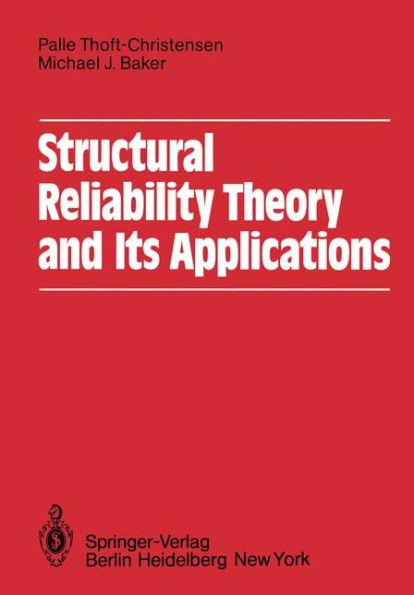Structural Reliability Theory and Its Applications
Structural reliability theory is concerned with the rational treatment of uncertainties in structural engineering and with the methods for assessing the safety and serviceability of civil engineering and other structures. It is a subject which has grown rapidly during the last decade and has evolved from being a topic for academic research to a set of well-developed or develop ing methodologies with a wide range of practical applications. Uncertainties exist in most areas of civil and structural engineeri'1.g and rational design decisions cannot be made without modelling them and taking them into account. Many structural engineers are shielded from having to think about such problems, at least when designing simple structures, because of the prescriptive and essentially deterministic nature of most codes of practice. This is an undesirable situation. Most loads and other structural design parameters are rarely known with certainty and should be regarded as random variables or shastic processes, even if in design calculations they are eventually treated as deterministic. Some problems such as the analysis of load combinations cannot even be formulated without recourse to probabilistic reasoning.
1031067595
Structural Reliability Theory and Its Applications
Structural reliability theory is concerned with the rational treatment of uncertainties in structural engineering and with the methods for assessing the safety and serviceability of civil engineering and other structures. It is a subject which has grown rapidly during the last decade and has evolved from being a topic for academic research to a set of well-developed or develop ing methodologies with a wide range of practical applications. Uncertainties exist in most areas of civil and structural engineeri'1.g and rational design decisions cannot be made without modelling them and taking them into account. Many structural engineers are shielded from having to think about such problems, at least when designing simple structures, because of the prescriptive and essentially deterministic nature of most codes of practice. This is an undesirable situation. Most loads and other structural design parameters are rarely known with certainty and should be regarded as random variables or shastic processes, even if in design calculations they are eventually treated as deterministic. Some problems such as the analysis of load combinations cannot even be formulated without recourse to probabilistic reasoning.
99.99
In Stock
5
1

Structural Reliability Theory and Its Applications
268
Structural Reliability Theory and Its Applications
268Paperback(Softcover reprint of the original 1st ed. 1982)
$99.99
99.99
In Stock

Product Details
| ISBN-13: | 9783642686993 |
|---|---|
| Publisher: | Springer Berlin Heidelberg |
| Publication date: | 12/10/2011 |
| Edition description: | Softcover reprint of the original 1st ed. 1982 |
| Pages: | 268 |
| Product dimensions: | 6.69(w) x 9.61(h) x 0.02(d) |
From the B&N Reads Blog
